Keynote Speakers
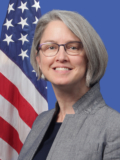
Kristen G. Burnham
Vice President, Program Management Organization Air Traffic Organization, Federal Aviation Administration
Tuesday, April 19, Conference Keynote Speaker
Kristen Burnham is the Federal Aviation Administration’s (FAA) vice president of the Program Management Organization (PMO) within the Air Traffic Organization. The PMO is responsible for all NextGen program activity; all National Airspace System (NAS) communications, navigation, weather, surveillance and automation modernization programs; and all service life extensions to legacy NAS sensors, communications and navigation aids. Given the tight coupling between successful automation program delivery, and current system operation, the PMO also leads and manages all second-level automation engineering efforts. Lastly, the PMO works with FAA operations and aviation users to ensure globally interoperable solutions for NextGen.
Since joining the FAA in 1993, Ms. Burnham has served as a regulatory economist, an investment analyst, a manager in the FAA’s budget office, the director of Portfolio Management at the Joint Planning and Development Office, the director of Investment Planning and Analysis, and deputy vice president of the PMO. She started her career at the U.S. Government Accountability Office, evaluating federally funded transportation programs. Ms. Burnham received a Bachelor of Arts in Economics from Mount Holyoke College and a master’s degree in public administration from the University of Washington.
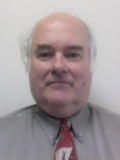
Michael Harrison
Tuesday, April 19, Evening Exhibitor Reception, Keynote Speaker
“From Ideas, through Innovation, to Market – What Popular Science Tells Us about Aviation”
Mike J. Harrison is an aviation evangelist associated with Aviation Management Associates in Alexandria, Virginia. He has over 47 years of aviation experience, 35 with the U.S. Air Force and the FAA in various capacities from being a pilot, aviation safety, capacity development, research and development of operational concepts ranging from airports to space. From 2005 to 2010 he served as the editor of The Journal of Air Traffic Control.
While with the FAA, he was the director of architecture and systems engineering until his retirement in 2002. For the last 13 years, he has worked to advance the details on the next generation air transportation system and its European counterpart efforts to change how air traffic management is provided. Now retired, he is returning to entertain with his interesting perspective on how aviation news meets reality. He holds a bachelor’s and master’s degree in biology from Oregon State University and advanced studies from American University.
Plenary Panel Chairs
Tuesday, April 19
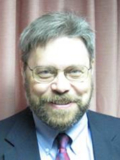
Steve Bradford
Steve Bradford is chief scientist for architecture and next generation (NextGen) development in the FAA’s NextGen Office. In this role, he has participated in the development of the Joint Planning and Development Office’s (JPDO) NextGen concept, the RTCA National Airspace System (NAS) Operational Concept and the ICAO Air Traffic Management Operational Concepts Panel (ATMCP) Global Concept. He is the chairman of the Technical Review Board which monitors technical decisions related investments and the enterprise architecture.
He also works with elements of the FAA and the JPDO to develop midterm plans and five year budget requests to implement NextGen. He has a leading role in several new activities with SESAR Joint Undertaking (SJU) and has led several cooperative international efforts via action plans with EUROCONTROL. Previous activities include leading efforts to validate future concepts and developing the FAA’s NAS enterprise architecture.

Philippe Merlo
Philippe Merlo joined EUROCONTROL in February 2014 and is responsible for the areas of air traffic management, research and development, including the respective relations to international bodies such as ICAO. Mr. Merlo has spent all his career in air traffic management, having worked for the Directorate General for Civil Aviation (DGAC) of France since graduating from the Ecole Nationale de l’Aviation Civile. He has held a number of senior posts, most recently deputy CEO of the Direction des Services de la Navigation Aérienne (DSNA) of France. In this role, he was responsible for crisis management, international relations and major projects.
Previous posts have included director of the Direction of Technology and Innovation, head of the Bordeaux en-route air traffic control center, and head of the Air Navigation Financial Department. Mr. Merlo has a degree in engineering from the Ecole Polytechnique and a degree in civil aviation engineering from the Ecole Nationale de l’Aviation Civile in France.
Wednesday, April 20

Anna von Groote
Anna von Groote has been the technical programme manager for the European Organisation for Civil Aviation Equipment (EUROCAE) secretariat since 2011. Before joining EUROCAE, she worked at the European Committee for Standardization (CEN) since 2006, where she assumed responsibilities for the organization’s work program in different sectors. In her role as programme manager at CEN, she was responsible amongst others for the aerospace and air traffic management sector. Ms. von Groote holds a master’s degree in European Studies from the Centre for European Integration Studies, University of Bonn (Germany).

Albert Secen
Al Secen is the vice president, Aviation Technology and Standards, RTCA. He has over 25 years of experience as a software and systems engineer working on air traffic management and intelligence community systems. Before joining RTCA, he was a senior systems engineer at Lockheed Martin for 23 years and is currently an adjunct professor of engineering at the Johns Hopkins Whiting School of Engineering. In his position, Secen oversees the work of the Program Management Committee and the 23 RTCA special committees engaged in developing concepts, standards, and guidance materials for aviation.
He also has a specific focus on the emerging standards and policies associated with unmanned aircraft systems (UAS). Secen holds a commercial pilot’s license and is a certificated flight instructor. He earned a Bachelor’s of Science in airway science from Embry-Riddle Aeronautical University and a Master’s of Science in computer science from Johns Hopkins University.
Thursday, April 21

Natesh Manikoth
Natesh Manikoth is part of the FAA’s NextGen organization and is the FAA’s chief scientist and technical advisor for National Airspace System (NAS) software. As NAS systems become ever more software-centric, it is the responsibility of the chief scientist for NAS software to provide expert technical guidance, advice, and leadership in all software related areas of the FAA system acquisition and development process. His primary focus areas are the sustainable acquisition practices for software intensive systems with an emphasis on improving the time and effort related to software validation and verification.
He also provides leadership in cybersecurity for NextGen and is part of FAA’s Cybersecurity Steering Committee. Prior to joining the FAA in 2012, Manikoth was the chief technology officer for the transportation, central and local government sector for Xerox services. He has over 25 years of experience with the development and deployment of large scale systems. Manikoth holds a bachelor’s degree in electrical engineering, and both a master’s degree and MBA in industrial engineering.

Patrick Mana
Patrick Mana is project manager of Centralised Services 6-6 & 6-7 (cybersecurity), EUROCONTROL. He has spent his entire career in air traffic management (ATM). A year ago, he returned to EUROCONTROL to join the Centralised Service Programme Management Office, in charge of cybersecurity-related Centralised Services CS6-6/Security Certificate Service and CS6-7/European ATM CERT and Security Operations Center for Centralised Services. Prior to this, he engaged in SESAR during the definition phase and joined the SESAR Joint Undertaking (SJU), where for 6 years he was SJU programme manager for all transverse activities (performance, CONOPS, enterprise architecture, master plan, safety, security, environment, human performance and business case).
Before this, he worked for EUROCONTROL, where for 10 years he led the European Air Traffic Management Programme (EATMP) safety assessment activities, supported ATM stakeholders implementing such practices and chaired international working groups. He began his lifelong air traffic management career in radar processing, then in software development and project/product management of navaids, remote control and monitoring of ATM systems, Controller Working Position and Voice Communication System. He also engaged in the definition of air traffic control center architecture and led an airborne communication system project.
ICNS General and Technical Chairs
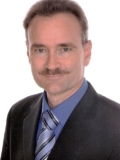
Dr. Michael Schnell
Conference General Chair
Michael Schnell is head of the Aeronautical Communications Research Group and theme coordinator for Aeronautics at the Institute of Communications and Navigation of the German Aerospace Center (DLR). The main research topics of his group are the modernization of communications and surveillance technology in civil aviation and the integration of unmanned aerial systems into civil air space. After his studies at the University Erlangen-Nuremberg he joined DLR in 1990 with a Master of Science in electrical engineering. Since then he has been working as scientific researcher and earned a doctorate for his work on wireless communications in 1997. He is a lecturer for multi-carrier communications and acts as selected advisor for the German Air Navigation Service Provider (DFS GmbH) on various committees at EUROCONTROL and ICAO. He has authored/co-authored over 100 publications, including more than 20 magazine articles. He is a senior member IEEE and member of VDE/ITG.
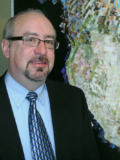
Robert Kerczewski
Conference Vice-Conference General Chair
Robert J. Kerczewski has been involved with research and development of satellite and aeronautical communications systems and applications for the Analex Corporation (1982-1986) and NASA (1986-present).
Kerczewski is currently the spectrum element manager for the NASA’s Unmanned Aircraft Systems Integration in the National Airspace System (UAS in the NAS) Communications Sub Project, leading spectrum analysis and advocacy activities for unmanned aircraft and other aeronautical applications. He holds a Bachelor of Science in electrical engineering from Cleveland State University (1982) and a Masters of Science in electrical engineering from Case Western Reserve University (1987).

Aloke Roy
Technical Program Chair
Mr. Aloke Roy is a senior program manager with Honeywell Advanced Technology. He currently manages data communication, information security and radio technology development programs supporting Honeywell Aerospace. Previously, Mr. Roy was director of programs at Flextronics Corporation managing several major telecommunications OEM accounts. In this role, Mr. Roy was responsible for business development, outsourcing, and globalization of hardware design activities supporting large volume contract electronic manufacturing. His prior experiences include various positions at AT&T Bell Laboratories and ARINC Aviation Systems Division.
As systems engineering director at ARINC, Mr. Roy oversaw development of SATCOM, HF, VDL, ATIS, and PDC standards and services. Currently, Mr. Roy chairs ICAO ACP Working Group “S” and RTCA Special Committee 223, which are developing the Aeronautical Mobile Airport Communication System requirements and operational performance standards. Mr. Roy holds several patents on aeronautical, wireless and secure communications.
Workshop Chairs

Lance Sherry
Lance Sherry is associate professor of systems engineering and operations research at George Mason University. Dr. Sherry also serves as the director of the Center for Air Transportation Systems Research at George Mason University. Dr. Sherry has over 30 years experience in the aviation industry serving as a flight-test engineer, flight control engineer, system engineer, lead system architect, program manager, strategic planning and business development.
Dr. Sherry served as a fellow at RAND Corporation 1999-2001. He has published over 100 papers and journal articles, holds several patents, and has received awards for his work. Dr. Sherry is a graduate of Brown University with a Bachelor of Science in electrical engineering, and he holds both a Master of Science and a doctorate in industrial and system engineering from Arizona State University.

Denise Ponchak
Ms. Denise S. Ponchak is the deputy branch chief of the Communications Architectures, Networks and Systems Branch at the National Aeronautics and Space Administration’s (NASA) Glenn Research Center at Lewis Field in Cleveland, Ohio. The branch is responsible for designing advanced networking concepts, architectures, technologies and system integration for aeronautics and space applications.
Prior to becoming a supervisor, Ms. Ponchak was an aeronautical communications project manager focusing on increasing the National Airspace System (NAS) telecommunications capability, and a communications research engineer supporting future satellite-based communications. She holds both a Bachelor of Science and a Master of Science in electrical engineering from Cleveland State University in 1983 and 1988 respectively.

